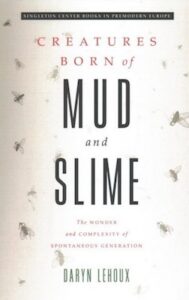 One need not read too far back into the history of natural history to encounter the idea of spontaneous generation – the idea that life could be created directly out of rotting material. It was a widely held, even thoroughly tested, theory that stood the test of a far longer period of time than many of our present scientific ideas have existed. However, just as with many now discredited scientific theories from the past, it is usually dismissed today without being given any thought as to why it was held to be true be some of history’s most accomplished scholars.
One need not read too far back into the history of natural history to encounter the idea of spontaneous generation – the idea that life could be created directly out of rotting material. It was a widely held, even thoroughly tested, theory that stood the test of a far longer period of time than many of our present scientific ideas have existed. However, just as with many now discredited scientific theories from the past, it is usually dismissed today without being given any thought as to why it was held to be true be some of history’s most accomplished scholars.
Daryn Lehoux, professor of classics and philosophy at Queen’s University, is not so readily dismissive, and in his new book Creatures Born of Mud and Slime; The Wonder and Complexity of Spontaneous Generation from Johns Hopkins University Press he presents the results of his research into why this idea was so tenacious in its hold on the minds of so many for so long.
As one deeply interested in not only natural history itself but in the history of the subject as well, I am keen to learn and what Professor Lehoux has discovered about this long-held, deeply influential theory that I too in the past have so casually dismissed.
